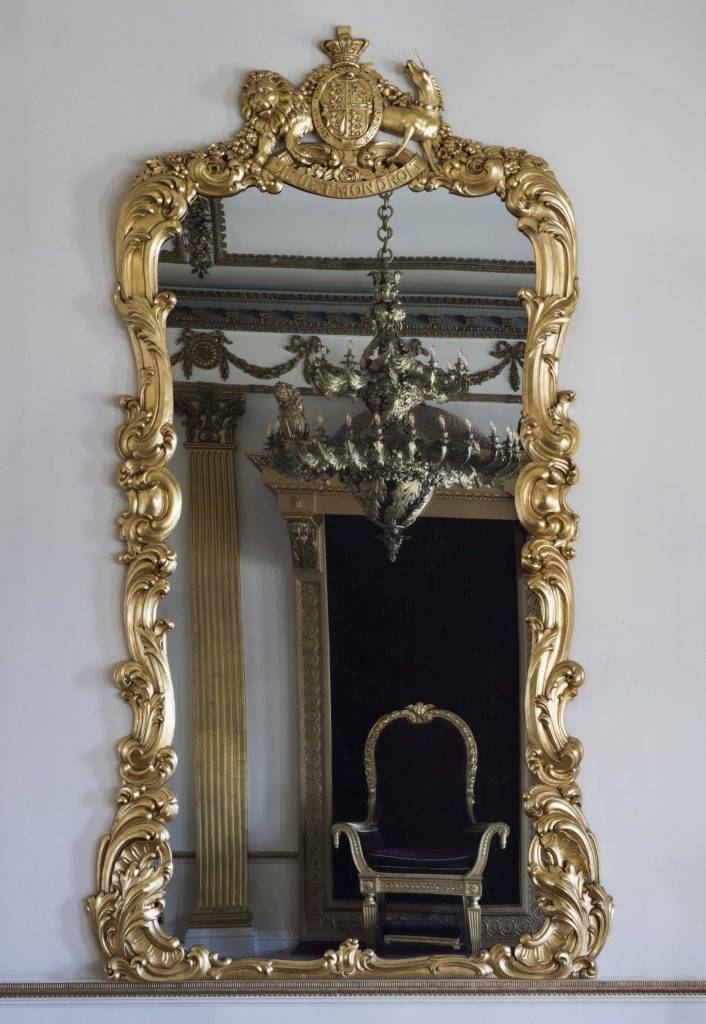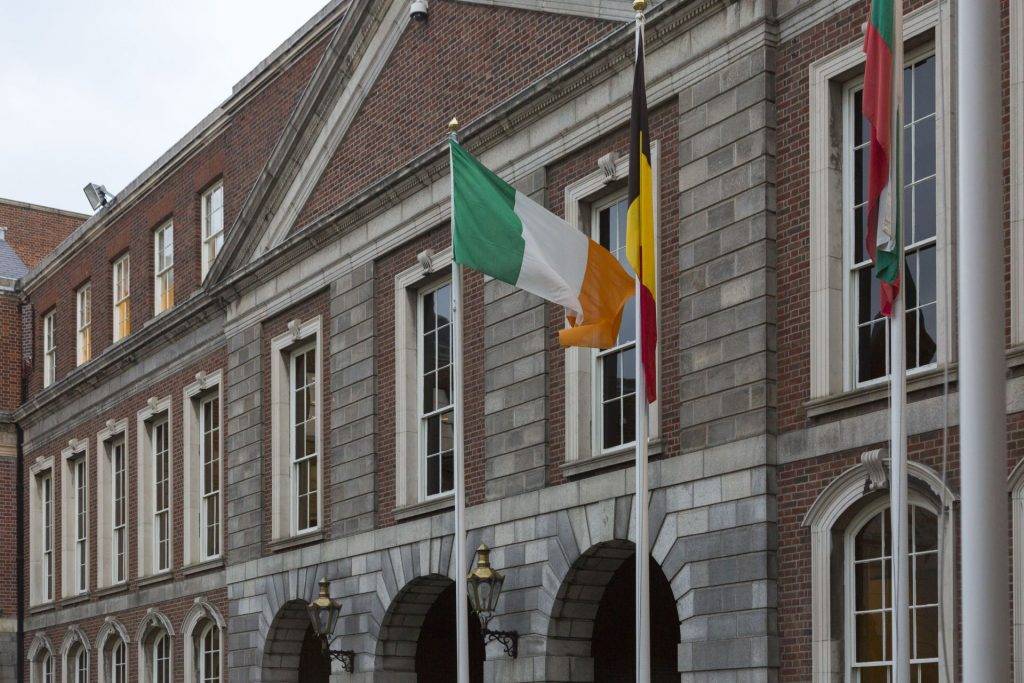By Dr Myles Campbell, Collections and Research
‘Sacred places are protected from spoliation; they are steeped in the hopes and sufferings of those who have fought for them.
And they belong to others who are yet to be.’
Roger Scruton
Working in Collections and Research at Dublin Castle, part of my regular routine is to traverse the well-worn walkways of the historic State Apartments, usually last thing in the evening. This familiar little circuit, sometimes taking no more than ten minutes, is an opportunity to make sure that everything is as it should be. Do the humidifiers need to be topped up with water? Does the clock in the State Drawing Room need to be wound? Are the relative humidity readings on the monitors in line with museum standards? Protection of this special place is at the heart of these enquiries. As I go about responding to them, every once in a while I pause and look around. In those fleeting, quiet moments at the close of day, there is a sense of solitude that is almost irreconcilable with the hubbub of barely an hour ago, and of the last seven centuries. In this stillness, it is easy to imagine Michael Collins arriving to take control of the Castle in January 1922, or to witness Queen Victoria approaching the throne for her first Irish levee, in August 1849. But the velvet-covered throne, once the central focus of those who came to see the viceroy or the British monarch, and still the focus of tourist selfies, lies dormant and unobserved. The great gilded mirror opposite, which once reflected the bejewelled multitudes of levee-goers, now stares back as blankly as the empty throne it faces. Standing in a space like the Castle’s Throne Room at this time of day, the hush is so unexpected that it can seem incompatible with the deafening echoes of the building’s long history.

That history is, in many ways, a familiar one of national hopes and sufferings: the hopes of the British administration at Dublin Castle for permanent control of Ireland; the sufferings of their opponents who were sometimes imprisoned within the Castle’s walls. In more recent times, it has represented hopes for a new Ireland. These hopes were apparent in the warm words of reconciliation spoken by Queen Elizabeth II during her visit to the Castle in 2011. They were equally apparent in the words of the country’s first female President, Mary Robinson, who made her inaugural speech in the State Apartments, in 1990. ‘The Ireland I will be representing’, President Robinson declared, ‘is a new Ireland: open, tolerant and inclusive’. But standing in the quiet of these spaces at dusk, I am struck by hopes and sufferings of a different, less lofty kind, that have often remained unknown, even to those familiar with Dublin Castle. Engaging in original archival research on the building and its collections gives me the chance to explore the extraordinary depth of the Castle’s history. As part of that work, it is often the hopes and sufferings of Ireland’s ordinary people that emerge most clearly. These are not the aspirations of presidents, princesses, kings, viceroys and Taoisigh, though these can often be read in the record of the Castle. They are instead, the everyday ones of the housemaids, architects, cooks, craftsmen, artists, gardeners, administrators and managers who have fought to keep the Castle going down through the centuries. In the same way that the national flag or stately portrait are part of our heritage at the Castle, so too are these experiences.

Reflecting on this as I complete my series of checks and close my notebook for another day, I realize that what we are working to protect and bring to life is not just the history of an important building but, just perhaps, of a sacred place. It is often said in today’s global society that nothing is sacred. But if a sacred place is indeed one that is protected from destruction, and steeped in the hopes and sufferings of those who have fought for it, Dublin Castle must surely come very close. If so, our routine checks, though significant in their own way, are little more than small, everyday experiences in the history of a place that belongs not to us, but to others who are yet to be.
